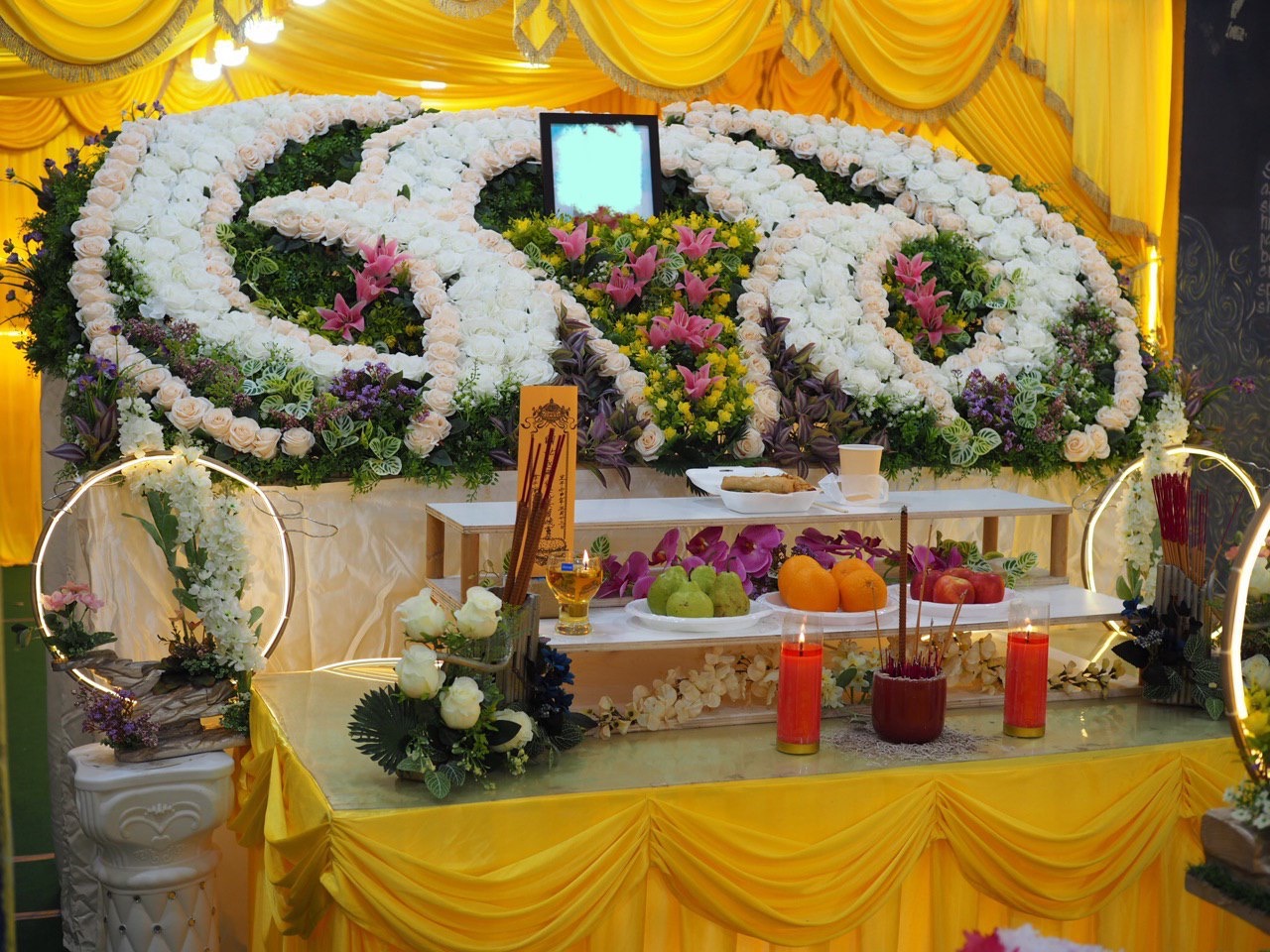
Buddhist funeral practices are deeply rooted in the religion’s teachings and reflect the core values of compassion, mindfulness, and the pursuit of enlightenment. These rites are not just a means of honoring the dead but also an essential part of the spiritual journey, helping both the deceased and the living navigate the cycles of life, death, and rebirth.
In Buddhism, death is seen as a natural transition, a passage to the next phase of existence. Buddhists believe in the cycle of samsara, which refers to the continuous cycle of birth, death, and rebirth. Death is not an end but rather a transformation, an opportunity for the soul to be reborn based on the karma accumulated in the current and previous lives.
Karma plays a crucial role in determining the circumstances of one’s rebirth. The deeds performed in this life affect future existences, making it vital for the living to generate good karma for the deceased. The concept of rebirth underscores the importance of conducting proper funeral rituals to ensure a favorable rebirth for the departed soul.
Funeral rituals in Buddhism are designed to guide the soul through the intermediate state (bardo) and support it in finding a positive rebirth. These ceremonies serve as a means for the living to express their grief, offer support to the deceased’s journey, and accumulate merit that benefits the deceased in their next life.
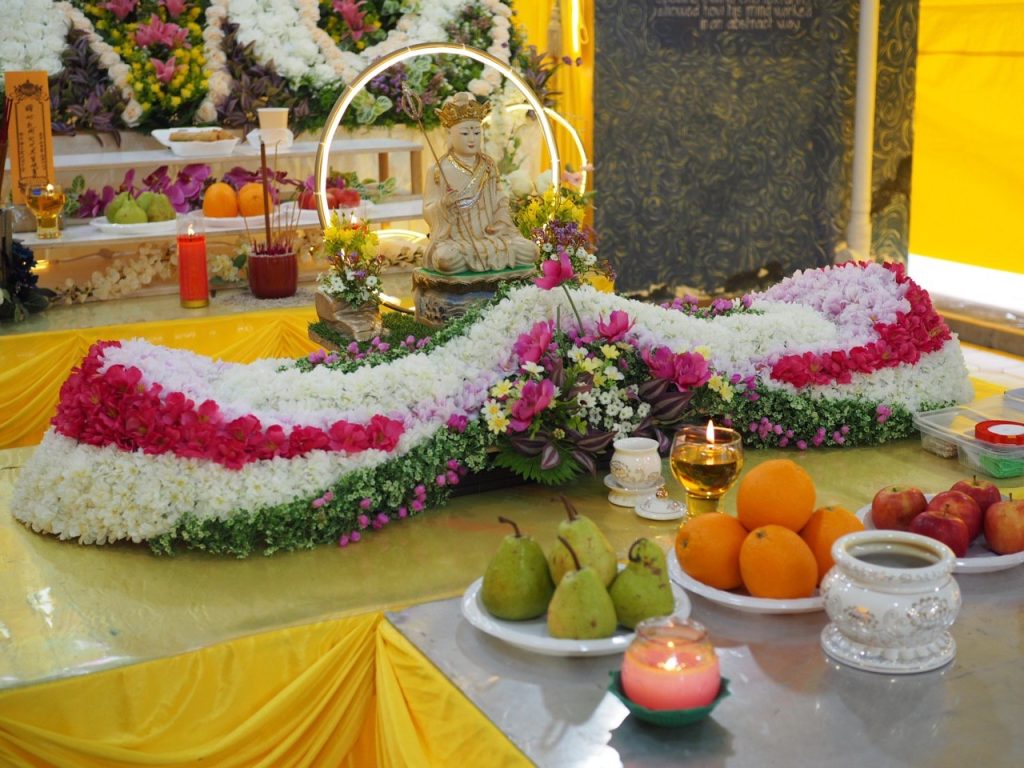
In Buddhist communities, family members and monks play significant roles in the funeral preparations. The family is responsible for organizing the ceremony, while monks, who represent the spiritual community, lead the prayers and rituals. The collaboration between the family and the monastic community ensures that the funeral rites are conducted according to tradition.
The body of the deceased is typically washed and dressed in simple, clean clothing. In some traditions, the body is dressed in white, symbolizing purity. It is common for the family to place a small image of the Buddha near the body, offering spiritual comfort and guidance to the departed soul.
Before the funeral, it is customary to offer food, incense, flowers, and other objects as a gesture of respect and support for the deceased. These offerings are often placed near the body or at an altar, symbolizing the connection between the material world and the spiritual journey of the soul.
The chanting of sutras, or sacred Buddhist texts, is a central part of the funeral ceremony. Monks and family members recite these texts to invoke blessings, calm the mind, and help guide the soul to a peaceful rebirth. The most commonly chanted sutra at funerals is the Heart Sutra, which emphasizes the impermanence of life and the emptiness of all phenomena.
Monks officiate the funeral ceremony, leading the chanting, offering prayers, and providing spiritual guidance to the family. Their presence is believed to bring blessings and help the deceased’s soul transition smoothly to the next life. Monks may also deliver a Dharma talk, reflecting on the nature of life and death from a Buddhist perspective.
Incense and candles are lit during the funeral as offerings to the Buddha and as a way to purify the environment. The smoke from the incense symbolizes the impermanence of life, while the light from the candles represents wisdom and the enlightenment that guides the soul through the afterlife.
Offerings of food, drink, and personal items of the deceased are made during the ceremony. These offerings are believed to provide sustenance and comfort to the soul as it embarks on its journey to the next life. In some traditions, symbolic paper money or goods are burned to ensure the deceased has what they need in the afterlife.
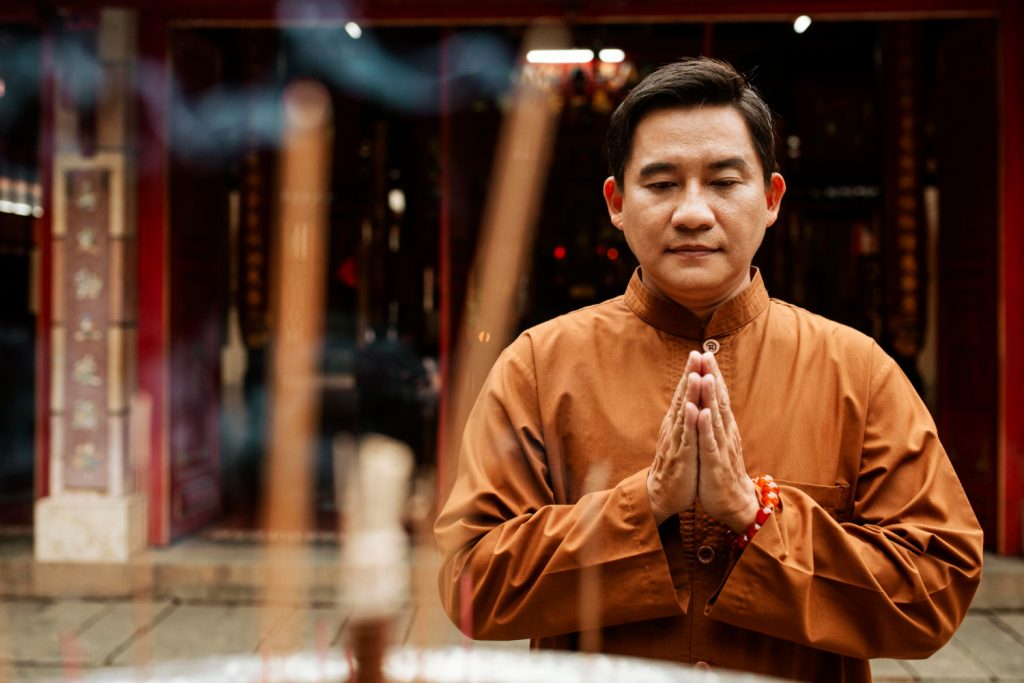
The Water-Pouring Ceremony is a ritual where water is poured over the hands of the deceased or into a container while monks chant blessings. The water symbolizes the transference of merit to the deceased, helping them in their journey through the afterlife. This act also signifies the flowing of good deeds from the living to the dead.
Transference of merit is a critical practice in Buddhist funerals, where the living perform good deeds and dedicate the merit earned to the deceased. This can include acts of charity, donations to temples, and sponsoring the funeral itself. The belief is that the merit transferred will positively influence the deceased’s rebirth.
Dana, or the offering of food to monks, is a significant part of Buddhist funerals. By feeding the monastic community, the family accumulates merit, which they then dedicate to the deceased. This ritual also reinforces the bond between the lay community and the monastic order.
At the conclusion of the funeral ceremony, a final blessing is given by the monks. The family and guests then pay their last respects to the deceased, often by bowing, offering incense, or placing flowers. This marks the final farewell, after which the body is either cremated or buried.
Cremation is the most common practice in many Buddhist traditions, reflecting the belief in the impermanence of the physical body. The body is typically cremated within a few days of death, following the funeral rites. The ashes are often collected and enshrined in a stupa or scattered in a location of significance to the deceased.
While cremation is prevalent, burial is also practiced in some Buddhist cultures, especially in regions where cremation is not feasible. The burial ceremony involves similar rituals, with the body being placed in a coffin and buried in a cemetery. In both cases, the focus remains on the spiritual aspects rather than the physical disposal of the body.
The act of cremation or burial is seen as a final release of the soul from the physical body, allowing it to continue its journey through the cycle of samsara. This ceremony is essential for providing closure to the family and ensuring that the deceased’s soul can move on peacefully.
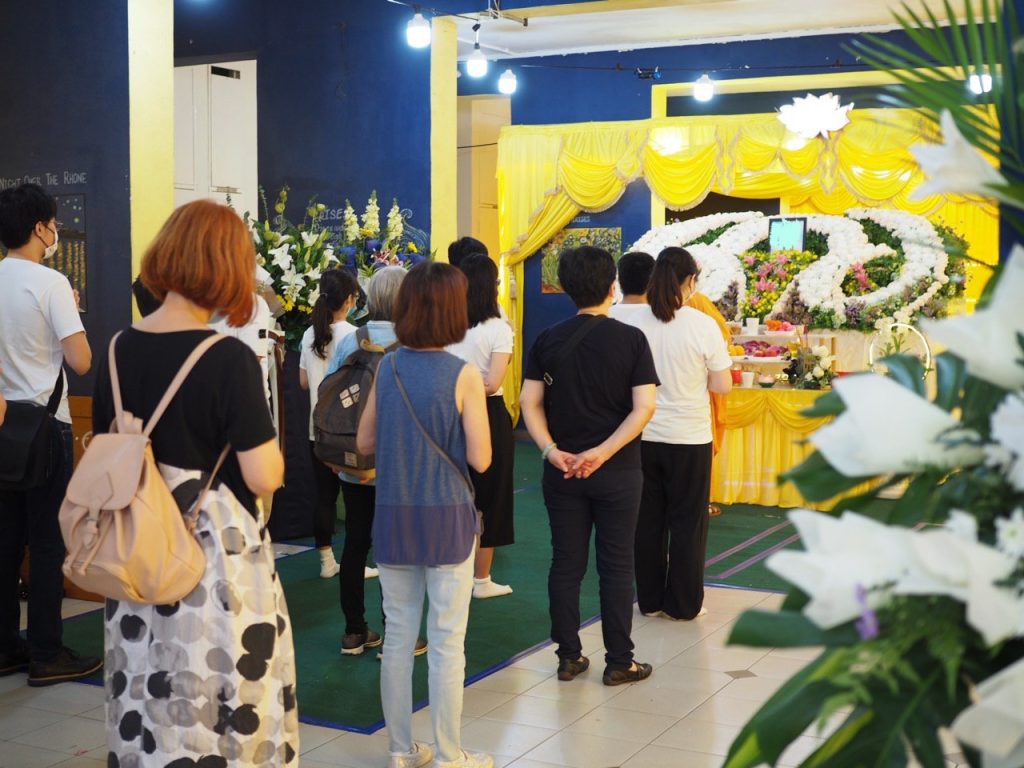
The mourning period in Buddhism varies depending on cultural and regional practices. It typically lasts for 49 days, during which family members engage in prayer, meditation, and merit-making activities to support the deceased’s journey. The first seven days are particularly important, as it is believed the soul is most vulnerable during this time.
Memorial services are held periodically after the funeral, usually on the 7th, 14th, 21st, 28th, 35th, and 49th days, and then annually. These services include chanting, offerings, and the transference of merit to the deceased. They serve as ongoing support for the soul’s journey and as a means for the living to continue honoring the memory of their loved one.
In many Buddhist cultures, annual memorials are held on the anniversary of the deceased’s passing. These rituals, often combined with ancestor worship, involve offerings of food, incense, and prayers. Ancestor worship reflects the deep respect for those who have passed on and acknowledges their continuing influence on the living.
Tibetan Buddhist funerals are unique in their practice of sky burials, where the body is left in the open to be consumed by birds. This reflects the belief in the impermanence of the body and the idea that the physical form should return to nature. The ritual is accompanied by prayers and the recitation of the Tibetan Book of the Dead, guiding the soul through the bardo.
In Japan, Buddhist funerals are deeply influenced by both Shinto and local customs. Cremation is almost universally practiced, and the funeral includes the chanting of sutras, offerings, and the use of a memorial tablet (ihai) inscribed with the deceased’s posthumous name. Japanese funerals are highly ritualized and emphasize both respect for the deceased and support for their soul’s peaceful transition.
In Thailand and other Southeast Asian countries, funerals often involve elaborate ceremonies that last several days. The body is usually kept in a casket for a period before cremation, during which monks perform nightly chanting ceremonies. The funeral procession is a significant event, with the casket being paraded to the cremation site, often accompanied by music and displays of respect.
Karma, the law of cause and effect, is central to Buddhist teachings and particularly significant at the time of death. The accumulated karma of the deceased determines their future rebirth, making it essential for family members to engage in merit-making activities that can positively influence this outcome.
Merit-making is a way to influence the deceased’s karma by performing good deeds in their name. This can include donating to charities, supporting monastic communities, and conducting the funeral in accordance with Buddhist teachings. The merit generated is believed to help the deceased attain a better rebirth or even reach enlightenment.
Families accumulate merit through various rituals, such as feeding monks, offering donations, and participating in chanting ceremonies. These acts of kindness and generosity are dedicated to the deceased, reflecting the deep interconnectedness between the living and the dead in Buddhist belief.
Globalization has brought about changes in Buddhist funeral practices, especially in urban areas where traditional customs may be adapted to suit modern lifestyles. While the core rituals remain, there may be variations in how they are conducted, with some families opting for simpler ceremonies or integrating elements from other cultures.
In urban settings, space constraints and time limitations have led to modifications in funeral practices. For example, cremations may take place in centralized facilities, and memorial services may be shortened. However, the spiritual essence of the rituals is preserved, ensuring that the deceased receives the necessary rites.
Despite the influence of modernity, many Buddhist communities strive to preserve traditional funeral practices. Monasteries and cultural organizations play a key role in educating the younger generation about the importance of these rituals, ensuring that the rich heritage of Buddhist funeral customs continues.
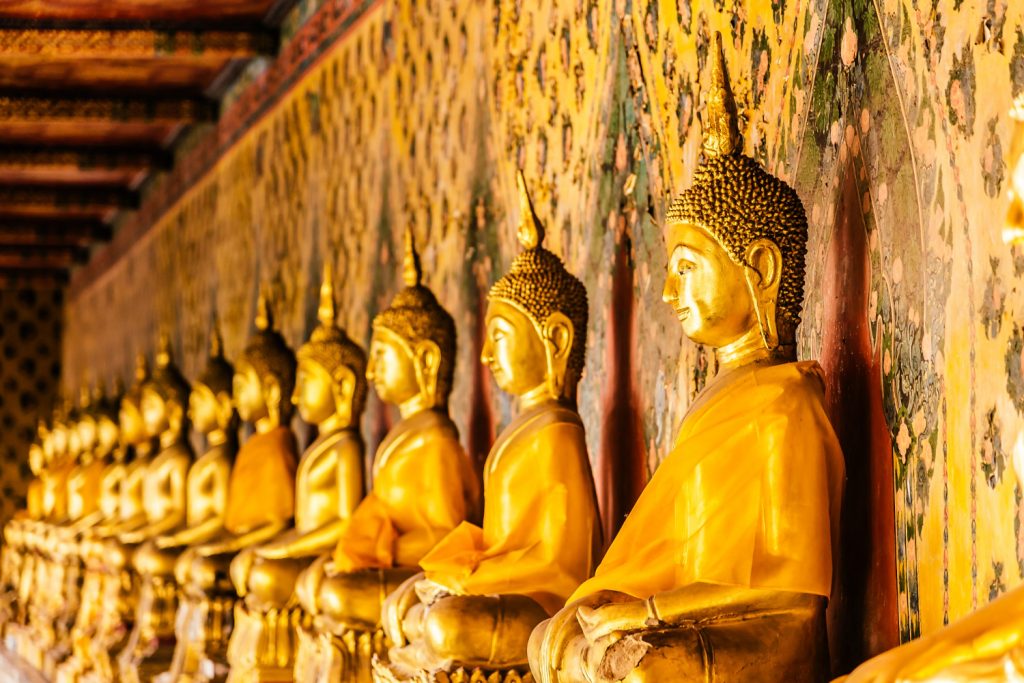
The primary purpose of Buddhist funeral rituals is to assist the soul in its journey through the afterlife. The ceremonies and prayers are believed to provide guidance, comfort, and protection, helping the soul navigate the bardo and achieve a favorable rebirth.
Meditation and mindfulness are integral to Buddhist funerals, both for the deceased and the living. Meditative practices help calm the mind, cultivate compassion, and deepen the understanding of impermanence. For the deceased, the vibrations of meditation and chanting are thought to create a peaceful environment that aids their transition.
Buddhist teachings encourage individuals to reflect on death as a part of life, using it as an opportunity for spiritual growth. By understanding and accepting the impermanence of life, Buddhists prepare themselves for death, ensuring they can face it with peace and clarity when the time comes.
While cremation is common, not all Buddhists are cremated. Burial practices are observed in certain regions and cultures within Buddhism. The choice between cremation and burial often depends on local customs, personal preferences, and practical considerations.
Buddhist funerals can vary widely in tone, ranging from solemn and reflective to celebratory and joyous. In some traditions, the funeral is seen as a time to celebrate the life of the deceased and to rejoice in their potential rebirth into a better existence.
There are many nuances to Buddhist funeral practices that can be misunderstood by those unfamiliar with the religion. For instance, the role of monks is not just ceremonial; they are central to guiding the spiritual journey of the deceased. Additionally, the practice of merit-making is often misinterpreted as superstition, when it is, in fact, a profound expression of interconnectedness.
When attending a Buddhist funeral, it is important to dress modestly, typically in white or subdued colors, as a sign of respect. Guests should behave calmly and quietly, avoiding any actions that might disturb the solemnity of the occasion. Removing shoes before entering the temple or home is also customary.
Even if you are not familiar with all the rituals, observing them with respect is crucial. If unsure, follow the lead of others or ask a family member for guidance. It is also respectful to participate in communal activities, such as chanting or offering incense, if you feel comfortable doing so.
Offering condolences to the family is an important part of attending a Buddhist funeral. A simple expression of sympathy or a small offering, such as flowers or a donation to the temple, is appropriate. Supporting the family through your presence and compassion can be incredibly meaningful.
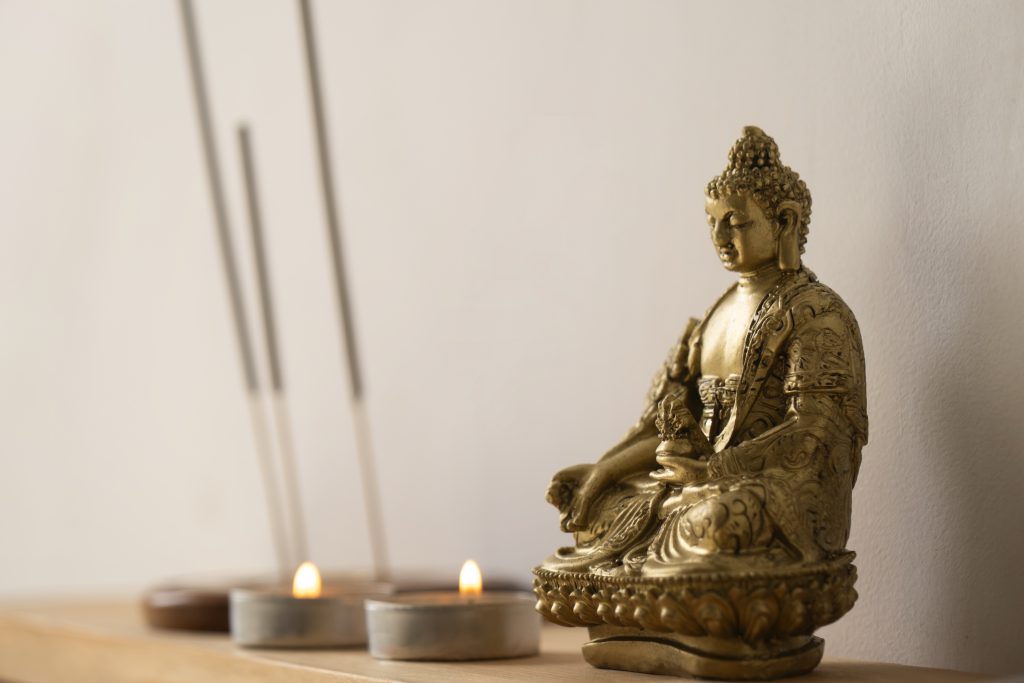
Compassion is at the heart of Buddhist teachings, and it is especially important during a funeral. Compassion for the deceased involves wishing them peace and a favorable rebirth, while compassion for the family means offering them emotional support during their time of grief.
Compassion, or “karuna,” is one of the four sublime states in Buddhism, alongside loving-kindness, sympathetic joy, and equanimity. In the context of funerals, compassion is expressed through the rituals that honor the deceased and support the bereaved.
Compassion influences every aspect of Buddhist funeral practices, from the careful preparation of the body to the transference of merit. It is through compassionate actions that the living help the deceased on their journey, creating a bond that transcends death and underscores the interconnectedness of all beings.
Buddhist funeral rites and rituals are deeply meaningful practices that reflect the religion’s teachings on life, death, and rebirth. These ceremonies provide comfort and guidance to the soul of the deceased, while also offering a space for the living to express their grief, accumulate merit, and support their loved one’s spiritual journey. As Buddhism continues to adapt to modern times, these ancient traditions remain a vital part of the cultural and spiritual fabric, offering profound insights into the nature of existence and the cycles of life.
